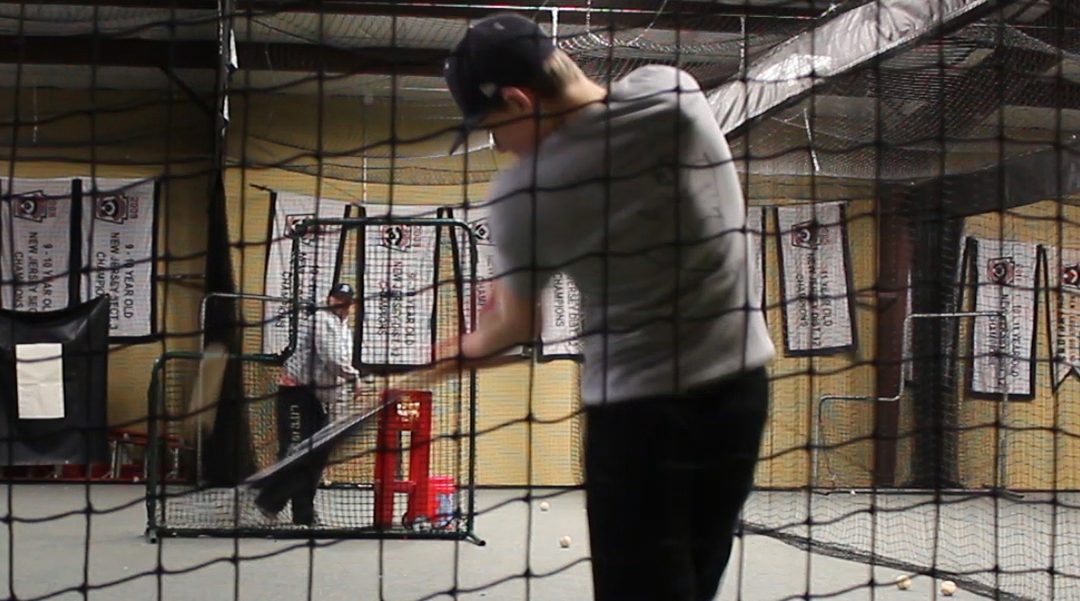It’s that time of year for youth baseball and softball players. While February ushers in spring training for major leaguers, youth players gather at indoor batting cages for instruction.
Preseason hitting lessons are very common for youth and high school players. The question posed is, are instructional lessons worth the time and money? The short answer is – yes. Good instruction can be extremely valuable for player development, confidence, and optimizing talent. It doesn’t guarantee success, but it puts players in better position to succeed.
For parents and hitters, here are four primary reasons why hitting instruction is beneficial. Those four points are followed by the Golden Rule of a good hitting instructor and a good student.
1-for-1: A Foundation of Fundamentals
A solid base of fundamentals is important to hitters of all ages and good instructors can help establish that base. Young hitters (ages 5 to 8) can benefit from learning a proper stance, pre-swing movements, swing path, and follow-through to form good habits. The earlier they develop a balanced, efficient swing, the easier time they’ll have hitting the ball consistently. Sound fundamentals allow the hitter to focus less on their swing and more on timing the pitch and recognizing its location.
Balance may be the most critical aspect of any swing. Here is what it gives you.
- It keeps your head still and allows your eyes to track the ball. It slows everything down, including the speed of the pitch in your mind’s eye.
- It’s the most powerful position from which to swing the bat. To maximize power – use your legs, core, hands, and wrists – you must be balanced.
- It allows you to adjust to the unexpected. If you’re fooled on a pitch, being balanced gives you a chance to put the barrel on the ball.
2-for-2: Identifying Weaknesses
Hitters love to practice the things at which they excel. Why wouldn’t they? They look good, they feel good, and it feeds the psyche.
Good instructors will assess hitters comprehensively to identify their strengths and weaknesses. The goal is to build upon the strengths and chip away at the weaknesses. As pitchers develop, they get better and better at exploiting hitter weaknesses.
Let’s say you struggle with outside strikes. Early in your career, you might get away with letting these pitches go and waiting for something better. Eventually, pitchers improve their command and will expose your inability to handle certain locations. An instructor will teach you how to hit the outside strike, expand your hitting zone, and make you a more complete hitter.
3-for-3: Understanding Your Swing
Former major league outfielder Dave Gallagher has been known to tell his students, “A good instructor teaches the hitter to become their own best coach – to understand their swing so well, that eventually, they’ll no longer need the instructor. It’s not the best business plan for me, but that’s the ultimate goal.”
As hitters progress to higher levels of play, it’s critical that they understand their swing. It enables them to adjust on the fly. If, for example, a fastball down the middle is topped and bounces foul to the pull side, a hitter may quickly determine, “I’m rolling my top hand too early. I need to stay through the ball.” They’re now ready to get back in the batter’s box.
Instructors can teach their students how to identify their mistakes as they happen. Whether it’s detected by feel, finish position, or result, the best hitters can right the wrong quickly and adjust during the at bat.
4-for-4: Confidence
Lessons can give you the feeling that you’re a ‘New and Improved’ product entering the season. Hitting is so dependent on confidence and comfort, and preparation is key to both.
Hitting instruction involves more than simply taking swings. It’s taking swings with purpose at the direction of an expert. Even taking a few lessons to get an assessment is valuable and here’s why.
Let’s say you’re confident and own a great work ethic. You decide instructional lessons are unnecessary. Instead, you’ll take 100 swings per night, four times a week leading up to the season. Unbeknownst to you, however, you’re wrapping the barrel during the load and your stride foot is landing open. That means you’re taking 400 flawed swings per week, reinforcing bad habits. It will take time to “undo” those habits when the season starts.
An experienced instructor can identify flaws and make sure you don’t get really good at doing things the wrong way.
The Golden Rule for Hitting Instructors
Instructors are going to have different styles of teaching, methods of practice, and points of emphasis. But here is one rule they should all live by: The instructor needs to learn the hitter. It’s not the hitter’s job to learn the instructor.
Each hitter has their individual make-up. They vary by height, build, strength, hand-size, fast-twitch muscles, vision, personality, emotional intelligence, and much more. A good instructor will recognize strengths and weaknesses and provide instruction tailored to that individual.
Be wary of “one-size fits all” hitting systems and hitting philosophies full of absolutes. What works for one may not work for another. Below is a list of the last six major league MVP award winners. Do you think these guys all hit the same?
2019: Cody Belanger and Mike Trout
2018: Christian Yelich and Mookie Betts
2017: Giancarlo Stanton and Jose Altuve
The Golden Rule for Hitters
Hitting instruction can have great value, but only when the hitter practices between sessions. If you choose to rely on the 30-60 minutes per week with the instructor, the impact from those lessons will be limited.
Practicing between sessions accelerates the learning process and allows the instructor to advance their teachings. When you spend 10-15 minutes a few times per week reinforcing what you’ve learned, you’re driving your progress and getting the most value you can out of those sessions.
One final note. Hitting instruction isn’t only about the swing. There is much more coaching, particularly as players get older. Approach, pitch recognition, situational hitting, and controlling emotions are components that become more critical and challenging as hitters progress.

